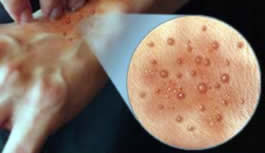Philippine herbal medicine
Approved herbal medicine by philippine department of health
|
|
|
|
| Banaba Herb is a medicinal herb endorsed by the Philippine Department of heath that has meidicnal value for diabetes treatment and weight loss |

Philippine Traditional and Alternative Medicine
Traditional medicine has been practiced since ancient times in every culture throughout the world and has been an integral part of human evolution and development.
The evolution of Philippine traditional medicine is an interesting study that is influenced by religion, mysticism, magic, superstition, folkloric herbalism and western medicine.
Philippine's common traditional medicine practitioners include the following
- hilot or manghihilot acts as a midwife, a chiropractor or massage therapist to promote health and healing,
- Tawas or mangtatawas, this practitioner uses alum, candles, smoke, paper, eggs and other mediums to diagnose the cause of illness associated by prayers and incanteations
- albularyo, a general practitioner who uses a combination of healing modalities that may include prayers, incantations, mysticism and herbalism. Albularyos claim to draw healing powers from a supernatural source (shamanism)
- Medico, a general practitioner similar to an albularyo but integrates western medicine to promote healing.
- Faith healers, a practitioner who claims divine power bestowed by the Holy Spirit or God. A patient is required to have faith and believe in divine powers to effect healing
These traditional medical practitioners covers a wide spectrum of practices and differs from one another. Even in this modern times where information and advanced science has greatly progressed, traditional medicine still enjoys a large following most especially in rural areas.
In recognition of the deep seated practice of traditional medicine as an alternative modality for treating and preventing diseases in the Philippines, the Department of Health (DOH) through its former Secretary Juan M. Flavier launched the Traditional Medicine Program in 1992. This program aims to promote an effective and safe use of traditional medicine,
Then President Fidel V. Ramos appreciated the importance of the traditional medicine program and signed into law Republic Act 8423 (R.A. 8423), otherwise known as the Traditional and Alternative Medicine Act (TAMA) of 1997. This gave rise to the creation of Philippine Institute of Traditional and Alternative Health Care (PITAHC) which is tasked to promote and advocates the use of traditional and alternative health care modalities through scientific research and product development
Since then the Philippine Department of Health (DOH) through its "Traditioinal Health Program" has endorsed 10 medicinal plants to be used as herbal medicine in Philippines due to its health benefits.
The following are the 10 Medicinal Plants in the Philippines endorsed by DOH:
- Akapulko (Cassia alata) a medicinal plant called "ringworm bush or schrub" and "acapulco" in English, this Philippine herbal medicine is used to treat tinea infections, insect bites, ringworms, eczema, scabies and itchiness.
- Ampalaya (Momordica charantia) Common names include "bitter melon " or "bitter gourd " in English. This Philippine herbal medicine has been found to be effective in the treatment of diabetes (diabetes mellitus), hemofrhoids, coughs, burns and scalds, and being studied for anti-cancer properties.
- Bawang (Allium sativum) Common name in english is "Garlic". Bawang is a used in Philippine herbal medicine to treat infection with antibacterial, antiinflammatory, anti-cancer and anti-hypertensive properties. It is widely used to reduce cholesterol level in blood.
- Bayabas (Psidium guajava) - "Guava" in English. A Philippine herbal medicine used as antiseptic, anti-inflammatory, anti-spasmodic, antioxidant hepatoprotective, anti-allergy, antimicrobial, anti-plasmodial, anti-cough, antidiabetic, and antigenotoxic in folkloric medicine.
- Lagundi (Vitex negundo) - known as "5-leaved chaste tree" in english is used in Philippine herbal medicine to treat cough, colds and fever. It is also used as a relief for asthma & pharyngitis, rheumatism, dyspepsia, boils, and diarrhea.
- Niyog-niyogan (Quisqualis indica L.) - is a vine known as "Chinese honey suckle". This Philippine herbal medicine is used to eliminate intestinal parasites.
- Sambong (Blumea balsamifera)- English name: "Ngai camphor or Blumea camphor" is a Philippine herbal medicine used to treat kidney stones, wounds and cuts, rheumatism, anti-diarrhea, anti spasms, colds and coughs and hypertension
- Tsaang Gubat (Ehretia microphylla Lam.) - English :"Wild tea" is a Philippine herbal medicine taken as tea to treat skin allergies including eczema, scabies and itchiness wounds in child birth
- Ulasimang Bato | Pansit-Pansitan (Peperomia pellucida) is a Phillipine herbal medicine known for its effectivity in treating arthritis and gout.
- Yerba Buena (Clinopodium douglasii) - commonly known as Peppermint, is used in Philippine herbal medicine as analgesic to relive body aches and pain due to rheumatism and gout. It is also used to treat coughs, colds and insect bites
Types of herbal medicine
Medicinal plants can be used by anyone, for example as part of a salad, an herbal tea or supplement. Many herbalists, both professional and amateur, often grow or wildcraft their own herbs. Making your own herbal medicine preparation is not only fun, but can be cost-effective. In using the above mentioned herbal medicines, some may require some degree of skill, you have to use your own judgement if you decide to use one. Below is a list of general ways on how to prepare your own herbal medicine. The list is not all inclusive and you have to see individual articles for the herb you use so that you will know how to prepare them.
Herbal teas
There are two methods of making herbal teas, infusion and decoction. Infusion is steeping lighter parts of the plant (leaves, flowers, light stems) in boiled water for several minutes. Decoction is boiling tougher parts, such as roots or bark for a longer period of time. Herbal teas are often used as a home remedy, and as an alternative to tea and coffee.
As a general rule unless recommended by a herbalist, Prepare 1 teaspoon of dried herb for every 1 cup of water. Let it steep in boiling water for 10 to 20 minutes. Strain the herbs out and drink 3 to 4 times a day.
Herbal tinctures
Steeping a medicinal plant in alcohol extracts the alcohol-soluble principles into a liquid form that can be stored for long periods. Herbalists may mix several herbal tinctures to form an individualized prescription for each patient. Plant tinctures are also the basis for many homeopathic medicines.
To prepare your herbal tincture you will need:
8 ounces of finely cut dried herbs,
1 large glass jar that can hold 4 cups of liquid
2 cups of vodka
Instructions:
Put the dried herb into a large, glass jar and pour in equal amount of liquid, making sure the herbs are completely covered (this is very important). Store the jar in a cool, dark place for at least two weeks, preferably 4. Make sure to shake the mixture every day. When ready to use, filter the mixture using a cheesecloth bag, coffee filter, or fine cloth, capturing the tincture liquid below in another container. Store the tincture in clean, dark glass containers, out of the sun. If stored properly the tincture will be preserved for two or more years. Vinegar tinctures should be refrigerated.
Note: A drop of tincture is equal to 1 tsp of herb juice.
For Vinegar Tinctures, use 1 ounce of herb per 5 ounces of vinegar.
Fluid extracts
Fluid extracts are stronger than herbal tinctures, and can be made with alcohol or glycerin.
Herbal poultices
Poultices are a solid, vegetable fat based mixture used externally. They have the shortest life span of any herbal remedy and must be made fresh for every use.
Powdered herbs and tablets
Herbs that are dried and (sometimes) certain parts are separated out then diced to powder fine consistency. Powered matter can then be compressed or put in an empty pill coating to form a tablet
Herbal creams and ointments
An ointment usually is mixed with beeswax (or something similar) to make it more applicable to outside the body, such as on a cut or scrape.
Essential oils
Extraction of volatile liquid plant materials and other aromatic compounds from plants gives essential oils. These plant oils may be used internally in some forms of herbal medicine as well as in aromatherapy and generally for their perfume, although their medicinal use as a natural treatment (alternative medicine) has proved highly efficacious in the treatment of headache and muscle pain, joint pain and certain skin diseases
Herbal supplements
Herbal supplements tend to be commercial products in tablet or capsule form manufactured and marketed by the health food industry for sale in retail outlets to the general public, although there are some types that are sold only to healthcare practitioners for prescription. Herbal supplements are often standardized to contain stated levels of active phytochemicals. Some herbalists may not agree with the standardization of active ingredients, preferring instead to use the whole plant.


